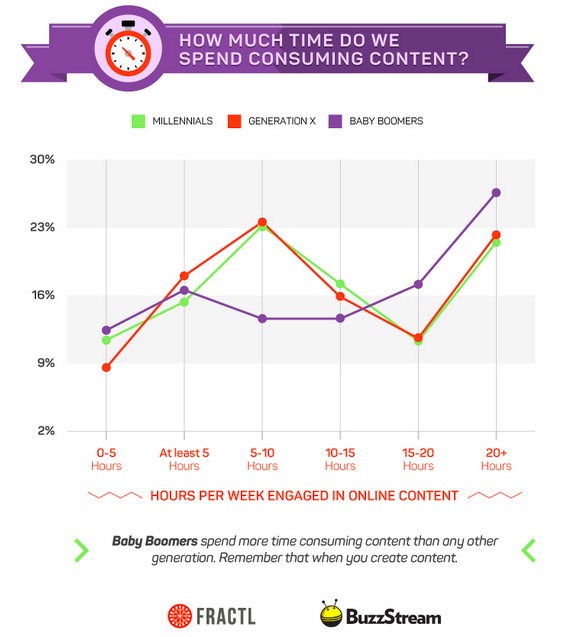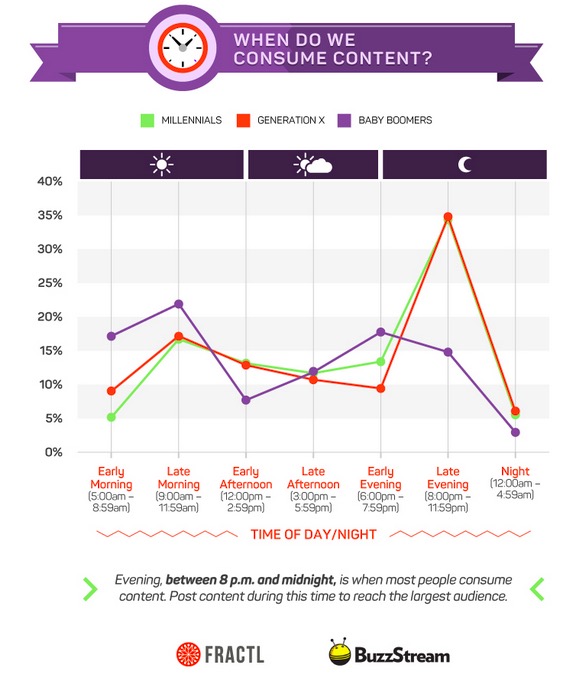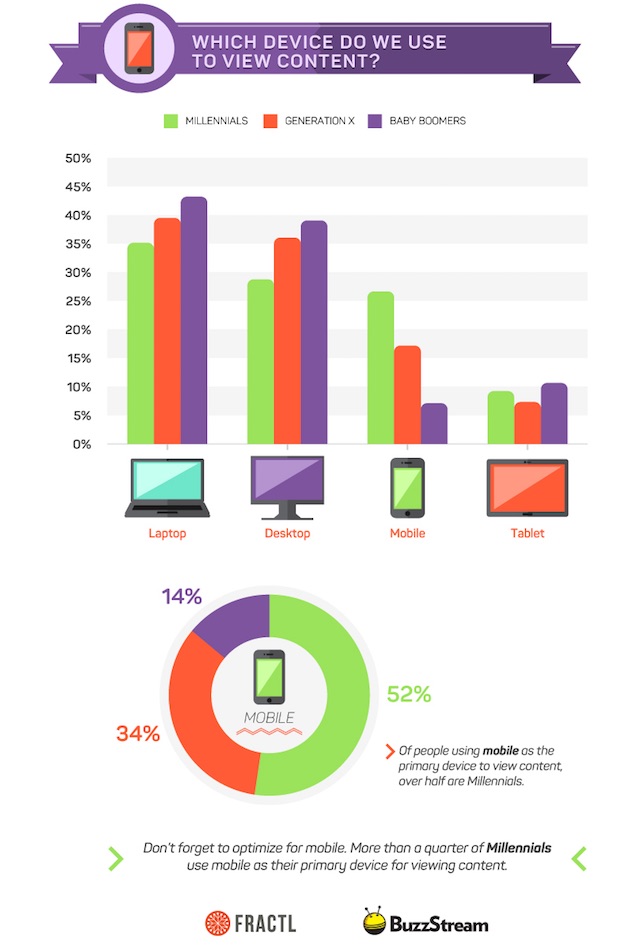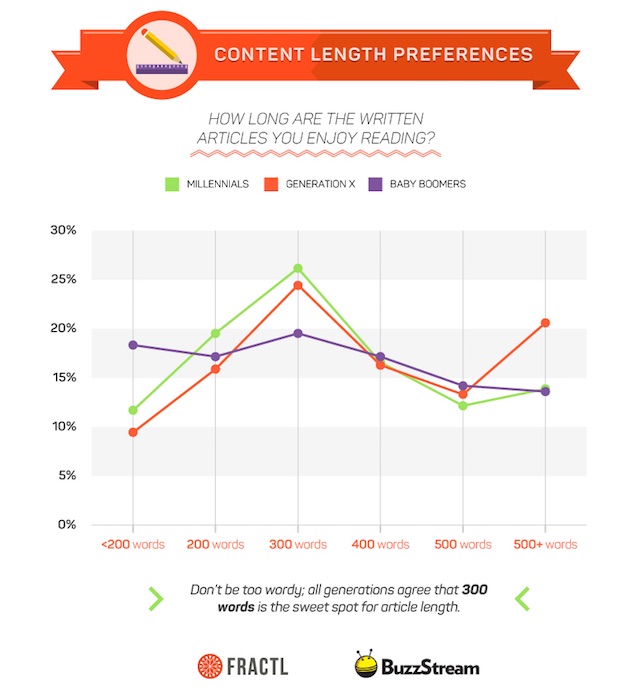How do the digital content consumption habits of Millennials, Generation Xers, and Baby Boomers differ?
To find out, Fractl and BuzzStream surveyed 1,200 adults on how much digital content they engage with, when they look at content, which devices they use most frequently for content consumption, and whether they prefer short-form or long-form content.
The generations were defined by the researchers as follows: Millennials (born 1977-1995), Generation Xers (born 1965-1976), and Baby Boomers (born 1946-1964).
Below, key findings from the report.
Time Spent Consuming Content
- Baby Boomers spend nearly 10% more time online consuming content than younger generations do.
- Baby Boomers are also the group most likely to spend 20+ hours each week consuming content: 25% say they do so.
- The largest share of Gen Xers and Millennials—just over 22% each—spend 5-10 hours per week consuming content.

When Content Is Consumed
- Baby Boomers tend to consume more online content during the week, whereas Millennials save much of their content consumption for the weekends; Gen Xers fall somewhere in between.
- Millennials and Gen Xers consume most of their content between 8 PM and midnight, local time.
- Baby Boomers consume most of their content in the mornings: Nearly 40% say they are online between 5 AM and noon.

Devices Used for Content Consumption
- Most Baby Boomers use a laptop (43%) or tablet (40%) as their primary device for consuming content.
- More than 25% of Millennials say their mobile phone is the primary device they use for content consumption.

The Ideal Written Content Length
- Millennials, Gen Xers, and Baby Boomers all agree on the ideal written content length: around 300 words.
- Baby Boomers have the highest preference for articles under 200 words (18% say they like most); Gen Xers like short articles the least (less than 10% prefer them).
- More than 20% of Gen Xers prefer articles longer than 500 words, compared with 15% of Baby Boomers and Millennials.

About the research: The report was based on data from a survey of 1,200 adults.




